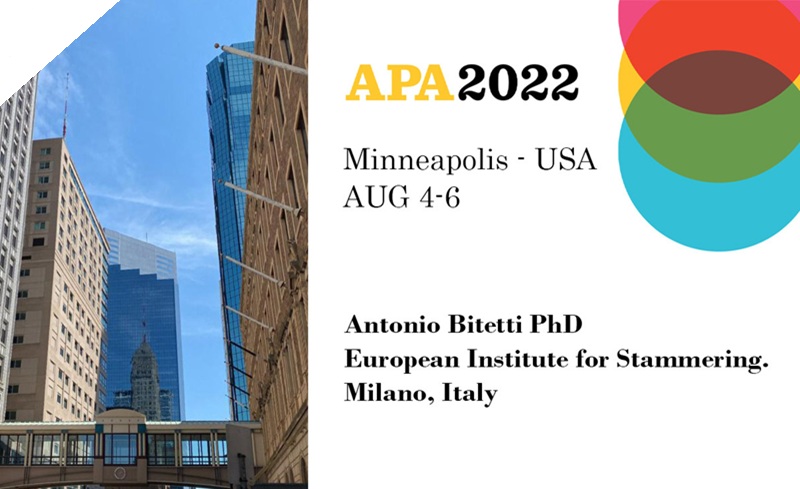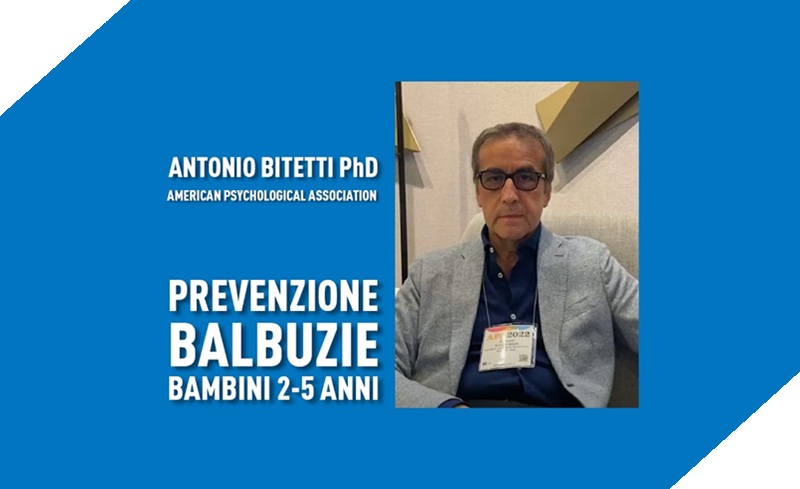Stuttering affects approximately 1-2% of the population, with a higher incidence in the male sex, out of ten cases of stuttering, eight are certainly male, affecting people from all social backgrounds and in every part of the world. This aspect alone could be an important reason for research in trying to demonstrate the socio-relational value of the disorder or, possible implications of a different order.
The stutterer knows what he wants to verbalize but is unable to express it, there is no synergy between thought and word. In the majority of stuttering subjects, for extremely variable reasons, there is a disorganization between thought and language. Too much time passes between what needs to be said and the possibility of saying it.
A precise diagnosis of stuttering can only be made when the mechanism has now consolidated in the child’s way and type of communication, that is, when it is: CHRONICIZED. Stuttering, from a strictly symptomatic point of view, consists of a set of alterations in the rhythm and fluidity of verbal expression and is experienced by those who suffer from it with great suffering and discomfort.
SOLUTIONS AND INTERVENTIONS PROPOSED ON THE BASIS OF SCIENTIFIC EVIDENCE
Currently, there is a substantial contradiction in the therapeutic offer regarding stuttering. In fact, all the phonatory and language re-education techniques, so massively proposed, start from the assumption that this disorder is of language. But in essence this is not the case, because as has already been described, the stutterer in the privacy of his own room, not subjected to the judgment of others, never stutters. It is therefore evident that the stutterer in his heart, knows that he speaks well, but he also knows and would like to explain to everyone, that his real problem is only one of relationship.
Supporting the eminently relational matrix of this widespread disorder, it is important to highlight another relevant aspect of this whole dynamic, that is, that the stutterer is also conditioned by the feedback generated by listening to his stuttering. In fact, an important research by the University of Edinburgh produced in the 80s a technological tool that allowed to cancel, through a buzzer, emitted during the emission, the listening of one’s own voice (Edinburgh Masker). This further evidence inevitably leads to the fact that the stutterer is strongly conditioned in his verbal performance, because he tends to suffer the human relationship, rather than manage it in a proactive and productive way.
All the dynamism of stuttering translates into a huge waste of potential resources, of missed personal affirmations and that go to impact on the general and above all social dynamism. Sometimes we underestimate the many human resources wasted through useless and sterile attitudes, but we should not continue to close our eyes in the face of such annihilation. The health of a population is the basis of its realization and affirmation, since everyone contributes to this project. The stutterer is also called to this intent and can no longer hide behind this symptom.
CULTURAL CRITICALITY AND STUTTERING
The criticality is represented above all by the cultural factor. After several decades of re-educational culture, the health world, at various levels, directs patients affected by stuttering towards re-educational or rehabilitative therapeutic solutions, neglecting the many aspects listed above.
A culture has been structured over time and in a stereotyped way, it is considered the most suitable, simply because historically it is the one proposed by public health. In all these years, serious research has never been done and this has also facilitated the proliferation of the strangest and most disparate treatment responses, it would be enough to take a look on the internet, to the detriment of the quality and effectiveness of the service offered.
There is a need for a cultural and methodological change, but this requires proposals and above all, training that pushes towards a modern vision of the problem. But as we all know, it is not easy to adapt to a new model, especially if it is not supported by statistical evidence and results. Hence the need for widespread experimentation involving the structures already present in the territory, but which have at heart the interest of the population in need of care, the best available in the territory.




